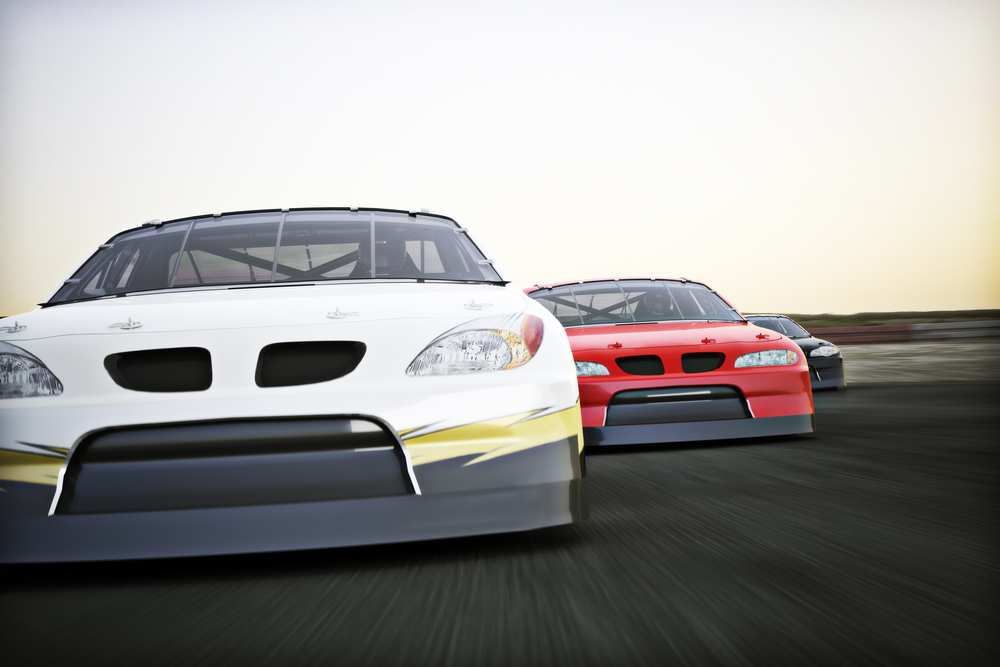NASCAR drivers have historically presented a high mortality risk, but recent data suggests that NASCAR mortality has improved over the last decade.
With numerous safety advances over the past 10 years, there have been zero deaths in NASCAR’s three National Series (Sprint Cup, Nationwide and Camping World Truck). Since Dale Earnhardt’s death at Daytona in February 2001, NASCAR has taken a proactive and aggressive approach to safety, opening a new research and development center near Charlotte Motor Speedway in 2002.1 Since 2001, there have been many improvements in helmets, seatbelts, on-board fire extinguishers, cars, use of crash data, the introduction of “soft-wall” technology and, most importantly, head and neck restraints. The information herein provides some overview of the major safety changes since 2001 and some data analysis. This article examines the relationship between major safety changes implemented by NASCAR within the last 10 years and the resulting decrease in deaths in NASCAR’s three National Racing Series since 2001.
Introduction
Auto racing is a broad genre that includes numerous racing categories, with each category representing a unique risk. NASCAR is the largest sanctioning body of stock car racing in the United States. The three largest racing series sanctioned by NASCAR are the Sprint Cup, Nationwide Series and Camping World Truck Series. The Sprint Cup Series is the sport’s highest level of competition, consisting of 36 races over a 10-month period. The Nationwide Series consists of 34 races, while the Camping World Truck Series consists of 25 races. While there are multiple factors to consider when comparing different racing types, it should be noted that NASCAR is much more stringent regarding safety standards, and an industry leader when it comes to research and development of safety innovations.
Arguably the most important safety improvement is the requirement of the HANS device. The HANS (head and neck support) device is a semi-hard collar made of carbon fiber and Kevlar, which is fastened to the upper body by a harness worn by the driver. Two flexible tethers on the collar are attached to the helmet to prevent the head from snapping forward or to the side during a wreck.5
When the green flag dropped to start the race in Daytona in 2001, only seven of the 43 drivers were wearing HANS restraints.2
In the nine months prior to Earnhardt’s death, three NASCAR drivers – Adam Petty, Kenny Irwin Jr. and Tony Roper – had died of the same injury (as Earnhardt) from the same cause: basilar skull fracture, resulting from violent movements of their unrestrained heads during crashes.
Basilar skull fracture is not just a fracture at the base of the skull. It involves the cracking of a small circular bone about the size of a quarter, the foramen magnum, at the bottom rear of the skull, where the bone and cartilage are weakest. The hole in the doughnut-shaped foramen magnum is a critical passageway. Through it run the two interior carotid arteries, which branch off from the exterior carotids in the neck. Part of the brainstem also passes through that hole. Cracking of the little bone can cut the interior carotid arteries, and the sufferer can bleed to death in a matter of seconds. There also can be damage to the areas of the brainstem that control breathing and heart rate.2
By the 2002 season, all drivers were required to wear head and neck devices.3
Another safety improvement was the upgrade in safety belts. After Earnhardt was killed while wearing a five-point harness, many drivers switched to a six-point harness, in which additional belts are wrapped around the legs. All the belts are connected to a single latch that can be released quickly to allow for a quick exit from the cockpit.1
In addition to the HANS device and seatbelt improvements, NASCAR made a full-face helmet mandatory after Earnhardt’s death.1 The helmet is designed to dissipate impact energy over the entire helmet and prevent debris from puncturing it.5
Another important safety improvement was the implementation of soft-wall technology. Since the 1990s, Dr. Dean Sicking, Director at Midwest Roadside Safety Facility, Lincoln, Nebraska, had been developing energy-absorbing barriers, called SAFER barriers, for the Indy Racing League.3 He began work on his own design, installing crushable foam insulation behind a series of square steel tubes.1 The first barriers went up at the Indianapolis Motor Speedway (IRL) in 2002, and NASCAR tracks began to follow suit 2 years later.3
In 2003, NASCAR required an additional fire-extinguishing cylinder solely dedicated to the fuel cell area in all three major touring series, mounted in the cockpit and automatically activated by heat.1
In addition to requiring fire extinguishers, NASCAR mandated black boxes in the early 2000s.1 This small device, about the size of a paperback book, is carried on board the cars. It records the sudden increases in ‘G-forces’ from every direction in every crash. The crash data is part of NASCAR’s investigation of every accident on the tracks. All that information is entered into a database so NASCAR can research and compare similar accidents, and make evaluations as to why one caused an injury while another did not.2
The final major safety improvement was to the NASCAR vehicle itself. Introduced for 16 races in 2007, the NASCAR “Car of Tomorrow” was implemented for the entire 2008 schedule for the Sprint Cup Series. The Car of Tomorrow is wider and taller than the previous race car (formerly NEXTEL Cup). The driver’s roll cage has been moved back and the driver’s seat has moved in toward the center of the car. This provides a larger “crumple zone” around the driver and will help protect the driver in a side impact.6 In addition to the center-located seat and larger driver’s compartment, energy-absorbing materials can be found throughout the gut of the vehicle.7
Data Analysis
According to the Bureau of Transportation statistics,8 the United States averaged 6.1 million traffic accidents per year over the period 2001–2008. This number includes minor fender-benders to major events. Those accidents resulted in an average of 42,000 fatalities per year. Meanwhile, NASCAR averaged about 220 crashes per year over the 9-year span of 2001–2009. Based on the ratio of one fatality per 146 accidents on U.S. roads, a similar fatality count in NASCAR would have amounted to 15 deaths since Dale Earnhardt’s in 2001. The range of expected deaths plus or minus one standard deviation would lie between 11 and 19. In fact, if the chances of dying in a NASCAR crash were the same as for all other crashes, the odds of having zero fatalities over that many crashes would be more than three million to one.
In NASCAR races, the average crash is likely to be much more violent than the average U.S. road accident, but these numbers still provide some perspective on the unlikelihood of observing zero fatalities over a 10-year period. The fact that there have been zero fatalities does not necessarily mean that NASCAR miles driven are less lethal than typical miles driven, but it should not be ruled out, especially in light of the crash data in the preceding section.
These drivers are still traversing heavy traffic (43 cars start each race) at speeds around 200 miles per hour. So besides the increased safety technology, what else is keeping NASCAR drivers alive at a higher rate than people involved in other crashes? It might help to look at some of the extenuating circumstances in fatal vehicle crashes and compare those to the circumstances of a NASCAR race:
- The drivers are not intoxicated. NASCAR does have a drug and alcohol testing policy9 for drivers and crew members. Alcohol is not permitted before or during a race. Strangely, the banned drug list is actually more extensive for crew members than for drivers, but suffice it to say that narcotics are illegal for all. Intoxicated driving is not legal for regular drivers on U.S. roads, of course, but that still did not stop an estimated 16,200 deaths per year from 2001–2008 due to alcohol- and drug-related traffic accidents (according to definitions by the National Highway Traffic Safety Administration10).
- Distracted drivers accounted for almost 5,500 fatalities in 2009, which was approximately 16% of the total motor vehicle deaths.11 NASCAR drivers experience many events that could be termed “distractions” during a race, but they all have to do with the drive. They are surrounded by hyper-aggressive drivers moving at very high speeds and they have crew members’ voices in their ears at all times. However, the crew member is not asking about where he should take Nana for her birthday – he is informing the driver of pertinent information regarding track conditions, the driver’s vehicle and other vehicles on the course.
- They are not racing motorcycles. Motorcycles account for only about 2% of all vehicles on the road, but they contribute more than 10% of the U.S. motor vehicle fatalities per year.12
- These vehicles are well maintained. It is estimated that only about 5% of accidents in the United States are caused by equipment failure.13 If we extrapolate that to then include 5% of motor vehicle fatalities, then that is another area where NASCAR has an advantage. Each driver has a team of maintenance experts thoroughly examining the vehicle before and during each race.
- Road conditions are necessarily better and more predictable in NASCAR races than in the outside world. It is not possible to accurately gauge the number of fatalities due to snow, fog, rain or other inclement weather events because the National Highway Traffic Safety Administration’s view is generally to categorize those fatalities as driver error (driving too fast to control the vehicle given the conditions). However, in NASCAR the race is either slowed or (more rarely) stopped while a significant weather event is occurring or if debris needs to be cleared from the track. Also, the tracks are known to the drivers. They are allowed practice runs, and qualifying runs are mandated before races – and the course does not change mid-race. Most tracks are laid out so that cars move counterclockwise in an oval pattern. Track distances vary, but most tracks follow this pattern.
- The drivers in NASCAR are all going in the same direction during the race. This limits the opportunity for head-on collisions and other ultra-violent circumstances that are more likely to happen in the outside world.
- NASCAR drivers are professionals who are trained and experienced in driving under precisely the conditions that the races present. This does not mean they are physically more likely to survive a horrific collision, but they should be more adroit than a typical driver at avoiding the worst possible collisions and maintaining their wits to stay safe in the aftermath of one.
Other Considerations
A renowned underwriter once said, “Underwriting is an art.” The guidelines for underwriting a policy go beyond “Is the applicant a driver in NASCAR or not?” The fact that the insured is a driver in the NASCAR Sprint Series is only one piece of the broader puzzle. One could argue that the NASCAR lifestyle is being penalized as much as the extra mortality due to racing. The job of an underwriter is to gather all information and assess each individual risk. For example, if a driver is also a private pilot and/or races in multiple racing leagues (including other NASCAR series), the underwriter should review all risk factors and rate commensurate with the risk.
Conclusion
In the insurance industry, we are in the business of taking calculated risks. Drivers in the NASCAR Sprint Series present additional mortality directly related to occupational risk factors. Although safety innovations and more stringent safety regulations have improved the mortality over the past decade, there will always exist some additional risk in this high-speed sport because of its very nature.




